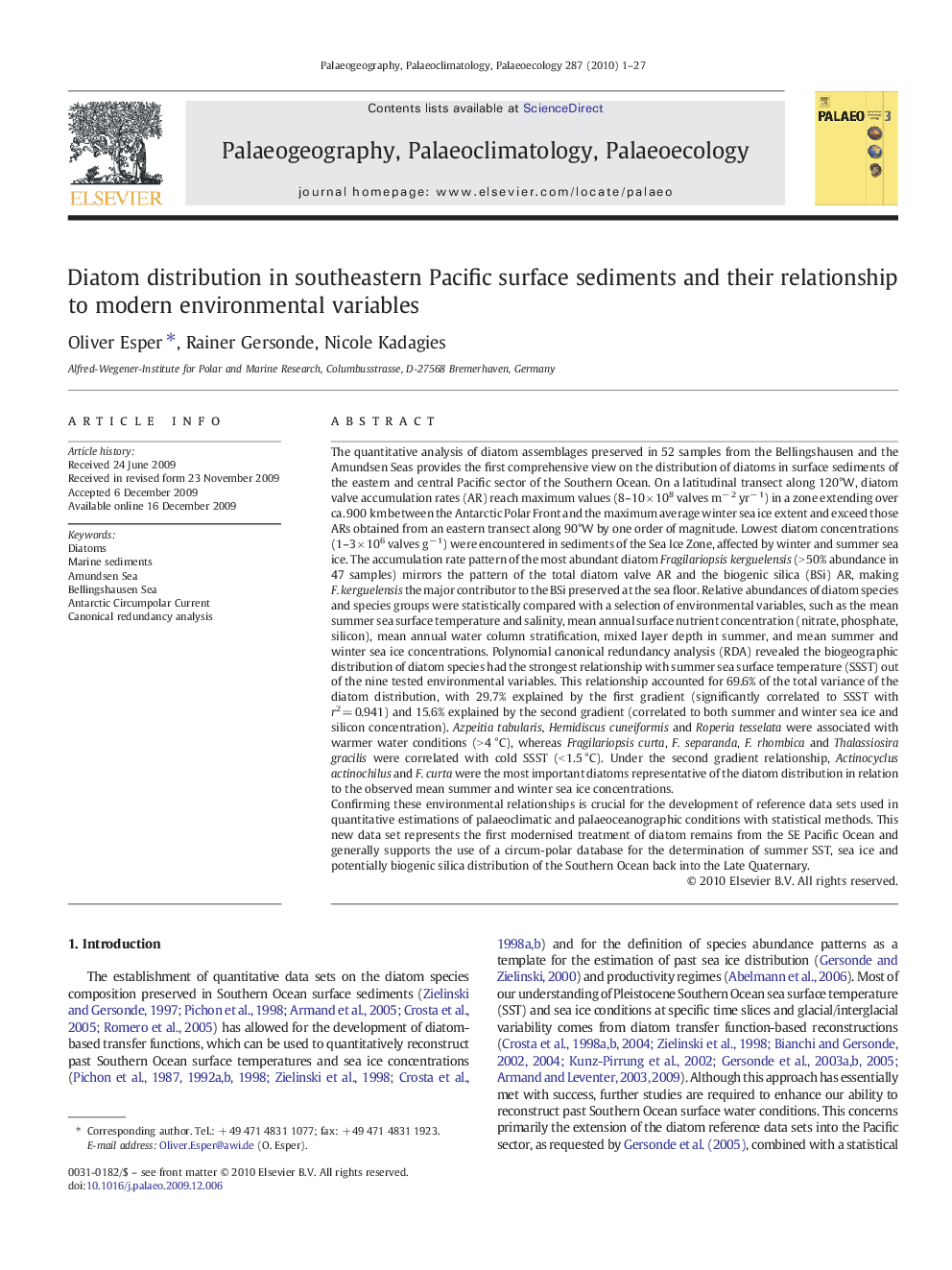| Article ID | Journal | Published Year | Pages | File Type |
|---|---|---|---|---|
| 4467831 | Palaeogeography, Palaeoclimatology, Palaeoecology | 2010 | 27 Pages |
The quantitative analysis of diatom assemblages preserved in 52 samples from the Bellingshausen and the Amundsen Seas provides the first comprehensive view on the distribution of diatoms in surface sediments of the eastern and central Pacific sector of the Southern Ocean. On a latitudinal transect along 120°W, diatom valve accumulation rates (AR) reach maximum values (8–10 × 108 valves m− 2 yr− 1) in a zone extending over ca. 900 km between the Antarctic Polar Front and the maximum average winter sea ice extent and exceed those ARs obtained from an eastern transect along 90°W by one order of magnitude. Lowest diatom concentrations (1–3 × 106 valves g− 1) were encountered in sediments of the Sea Ice Zone, affected by winter and summer sea ice. The accumulation rate pattern of the most abundant diatom Fragilariopsis kerguelensis (> 50% abundance in 47 samples) mirrors the pattern of the total diatom valve AR and the biogenic silica (BSi) AR, making F. kerguelensis the major contributor to the BSi preserved at the sea floor. Relative abundances of diatom species and species groups were statistically compared with a selection of environmental variables, such as the mean summer sea surface temperature and salinity, mean annual surface nutrient concentration (nitrate, phosphate, silicon), mean annual water column stratification, mixed layer depth in summer, and mean summer and winter sea ice concentrations. Polynomial canonical redundancy analysis (RDA) revealed the biogeographic distribution of diatom species had the strongest relationship with summer sea surface temperature (SSST) out of the nine tested environmental variables. This relationship accounted for 69.6% of the total variance of the diatom distribution, with 29.7% explained by the first gradient (significantly correlated to SSST with r2 = 0.941) and 15.6% explained by the second gradient (correlated to both summer and winter sea ice and silicon concentration). Azpeitia tabularis, Hemidiscus cuneiformis and Roperia tesselata were associated with warmer water conditions (> 4 °C), whereas Fragilariopsis curta, F. separanda, F. rhombica and Thalassiosira gracilis were correlated with cold SSST (< 1.5 °C). Under the second gradient relationship, Actinocyclus actinochilus and F. curta were the most important diatoms representative of the diatom distribution in relation to the observed mean summer and winter sea ice concentrations.Confirming these environmental relationships is crucial for the development of reference data sets used in quantitative estimations of palaeoclimatic and palaeoceanographic conditions with statistical methods. This new data set represents the first modernised treatment of diatom remains from the SE Pacific Ocean and generally supports the use of a circum-polar database for the determination of summer SST, sea ice and potentially biogenic silica distribution of the Southern Ocean back into the Late Quaternary.
